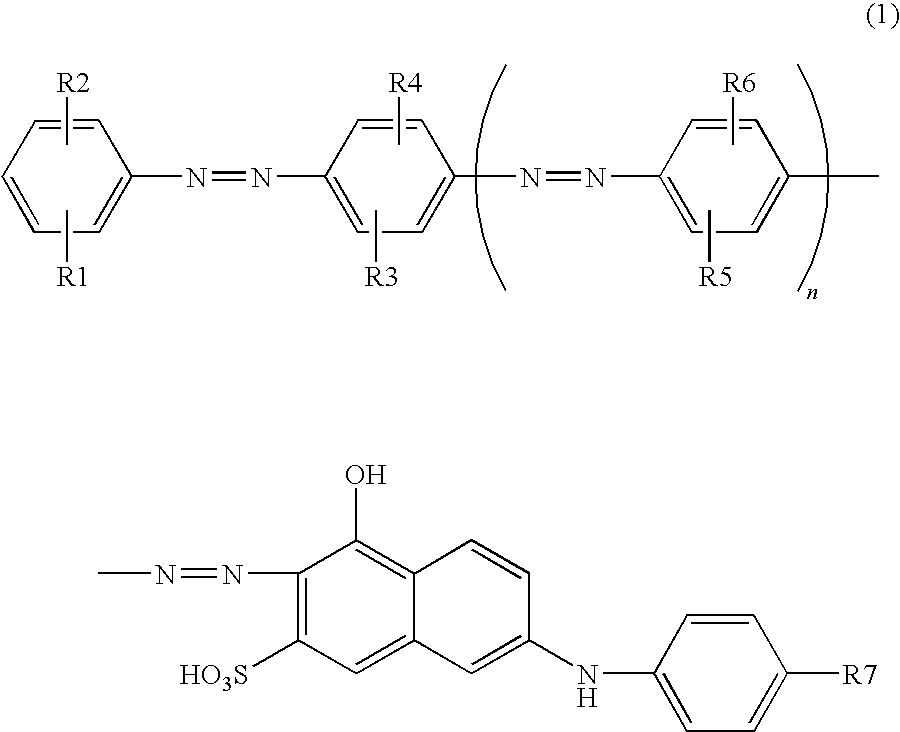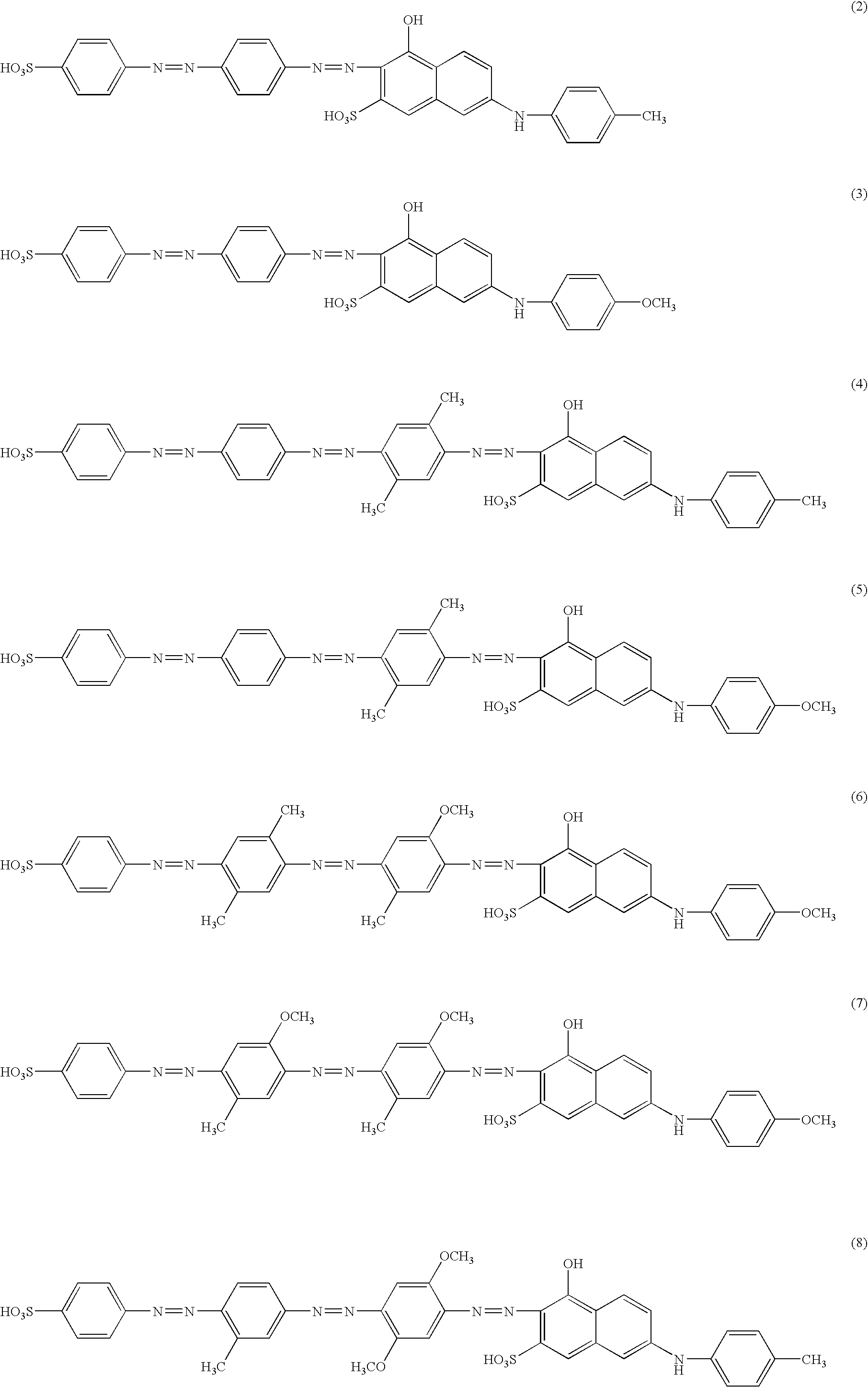Azo compound and dye polarizing film containing the same
a technology of polarizing film and compound, which is applied in the direction of polarizing elements, instruments, disazo dyes, etc., can solve the problems of insufficient light resistance, heat resistance, and wet heat resistance of dye-containing polarizing elements, and achieve excellent polarization performance and resistance to humidity, heat and light, and high performance. , the effect of excellent polarization performance and resistan
- Summary
- Abstract
- Description
- Claims
- Application Information
AI Technical Summary
Benefits of technology
Problems solved by technology
Method used
Image
Examples
example 1
[0051]27.7 parts of 4-(4′-aminophenyl)-azobenzenesulfonic acid were added to 500 parts of water and dissolved with sodium hydroxide. 32 parts of 35% aqueous hydrochloric acid were added thereto followed by addition of 6.9 parts of sodium nitrite and the mixture was stirred for one hour. Separately, 55 parts of the naphthol compound represented by the following formula (19) were added to 250 parts of a 20% pyridine aqueous solution and dissolved by making weakly alkaline with sodium carbonate. Subsequently, in this solution was introduced the diazotized product of the disazo compound obtained above with keeping the pH at 7 to 10, and the solution was stirred to complete the coupling reaction. Salting-out was carried out with sodium chloride and the precipitate was filtered to obtain 24.7 parts of the trisazo compound represented by the above formula (2). This compound had a reddish violet color and a maximum absorption wavelength at 542 nm in a 20% pyridine aqueous solution.
example 2
[0052]25.3 parts of the compound represented by the above formula (3) were obtained in the same manner as in Example 1, except that the naphthol compound represented by the above formula (19) used in Example 1 was replaced with the compound represented by the following formula (20). This compound had a violet color and a maximum absorption wavelength at 542 nm in a 20% pyridine aqueous solution.
example 3
[0053]27.7 parts of 4-(4′-aminophenyl)-azobenzenesulfonic acid were added to 500 parts of water and dissolved with sodium hydroxide. 32 parts of 35% aqueous hydrochloric acid were added thereto followed by addition of 6.9 parts of sodium nitrite and the mixture was stirred for one hour. 12.1 parts of 2,5-dimethylaniline dissolved in dilute hydrochloric acid water were added thereto and pH was adjusted to 3 by adding sodium carbonate while stirring at 30 to 40° C. The mixture was further stirred to complete the coupling reaction and 32.8 parts of the disazo compound represented by the following formula (21) were obtained.
[0054]In 600 parts of water were dispersed 40.9 parts of the disazo compound of the above formula (21), and then thereto were added 32 parts of 35% aqueous hydrochloric acid and then 6.9 parts of sodium nitrite, followed by stirring at 25 to 30° C. for 2 hours to perform diazotization. Separately, 34.5 parts of the naphthol compound represented by the following formu...
PUM
| Property | Measurement | Unit |
|---|---|---|
| pH | aaaaa | aaaaa |
| temperature | aaaaa | aaaaa |
| temperature | aaaaa | aaaaa |
Abstract
Description
Claims
Application Information
 Login to View More
Login to View More - R&D
- Intellectual Property
- Life Sciences
- Materials
- Tech Scout
- Unparalleled Data Quality
- Higher Quality Content
- 60% Fewer Hallucinations
Browse by: Latest US Patents, China's latest patents, Technical Efficacy Thesaurus, Application Domain, Technology Topic, Popular Technical Reports.
© 2025 PatSnap. All rights reserved.Legal|Privacy policy|Modern Slavery Act Transparency Statement|Sitemap|About US| Contact US: help@patsnap.com



